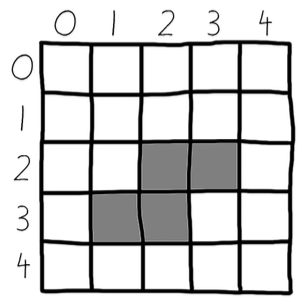8.8: Splitting a “Line of Code” Across Multiple Lines
- Page ID
- 14583
You can see that this list is spread across many lines in the file editor. This is perfectly valid Python, because the Python interpreter realizes that until it sees the ] closing square bracket, the list isn’t finished. The indentation doesn’t matter because Python knows you won’t have different indentation for a new block in the middle of a list. This code below works just fine:
spam = ['hello', 3.14, 'world', 42, 10, 'fuzz']
eggs = ['hello', 3.14,
'world'
, 42,
10, 'fuzz']
Though, of course, the code for the eggs list would be much more readable if we lined up all the items in the list or put on a single line like spam.
Normally, splitting a line of code across multiple lines in the file editor would require putting a \ character at the end of the line. The \ tells Python, "This code continues onto the next line." (This slash was first used in the Sliding Puzzle game in the isValidMove() function.)
We will make "template" data structures of the shapes by creating a list of these list of strings, and store them in variables such as S_SHAPE_TEMPLATE. This way, len(S_SHAPE_TEMPLATE) will represent how many possible rotations there are for the S shape, and S_SHAPE_TEMPLATE[0] will represent the S shape’s first possible rotation. Lines 47 to 147 will create "template" data structures for each of the shapes.
Imagine that each possible piece in a tiny 5 x 5 board of empty space, with some of the spaces on the board filled in with boxes. The following expressions that use S_SHAPE_TEMPLATE[0] are True:
S_SHAPE_TEMPLATE[0][2][2] == 'O' S_SHAPE_TEMPLATE[0][2][3] == 'O' S_SHAPE_TEMPLATE[0][3][1] == 'O' S_SHAPE_TEMPLATE[0][3][2] == 'O'
If we represented this shape on paper, it would look something like this:

This is how we can represent things like Tetromino pieces as Python values such as strings and lists. The TEMPLATEWIDTH and TEMPLATEHEIGHT constants simply set how large each row and column for each shape’s rotation should be. (The templates will always be 5x5.)
SHAPES = {'S': S_SHAPE_TEMPLATE,
'Z': Z_SHAPE_TEMPLATE,
'J': J_SHAPE_TEMPLATE,
'L': L_SHAPE_TEMPLATE,
'I': I_SHAPE_TEMPLATE,
'O': O_SHAPE_TEMPLATE,
'T': T_SHAPE_TEMPLATE}
The SHAPES variable will be a dictionary that stores all of the different templates. Because each template has all the possible rotations of a single shape, this means that the SHAPES variable contains all possible rotations of every possible shape. This will be the data structure that contains all of the shape data in our game.

